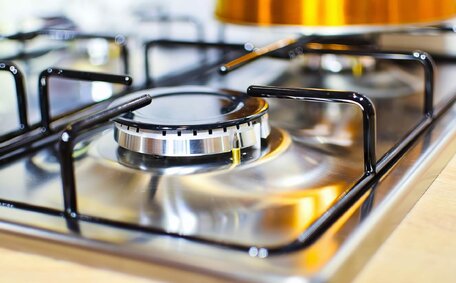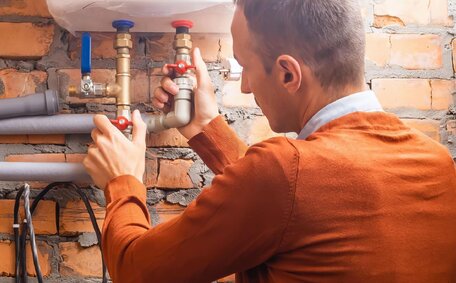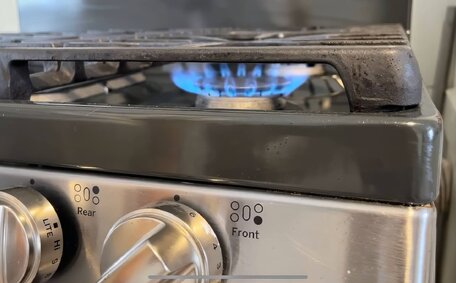Introduction to Using a Plunger on Clogged Drains
Blocked drains are a frustrating inconvenience.
When a sink or toilet suddenly stops draining properly, most homeowners grab the nearest plunger as a first line of defence. Yet, plungers vary and using the wrong one or applying incorrect technique might worsen clogs. Knowing the right plunger types and techniques is critical to unclog drains effectively.
Mascot Plumbing, based near the Gold Coast, excels in resolving various drain blockages swiftly and effectively. Our skilled plumbers in Mascot and Sydney use specialised tools and techniques for each unique blockage. But often, employing basic drain cleaning techniques like using a plunger can get right to the problem if done correctly.
In this comprehensive troubleshooting guide, you’ll need to grasp everything, including how pouring boiling water down a clogged drain aids in using a plunger effectively. You’ll explore the following topics:
- The different types of plungers and their best uses
- Proper plunger techniques you can use for sinks, tubs, and toilets
- When a plunger may not suffice, you recognise it’s time to call up a seasoned plumber
- Tips to help prevent future clogs
With insights on efficiently using hot water and a plunger, the process becomes straightforward. This can spare homeowners inconvenience and cost, providing the essentials for DIY drain unclogging. Let’s get started!
Types of Plungers and Their Uses
Plungers come in two primary types, each crafted for particular tasks in kitchens and bathrooms:
Cup Plungers
Cup plungers, equipped with a flat rubber cup and typically a wooden handle, are engineered to create optimal suction to clear clogs in pipes. Cup plungers are an excellent choice to unblock sink blockages by pushing down, as they create a tight seal on the flat surface.
Toilet Plungers
Toilet plungers, ideal for a blocked toilet and sometimes called flanged force cups, have an extra piece of rubber that extends from the cup. This flange allows the plunger to get a good seal in the down pipe below the toilet drain.
Matching the plunger to the drain type is crucial for best results, a task that may require a plumber’s expertise. Using an incorrect plunger could result in it getting stuck or not creating a sufficient seal to dislodge deep blockages.
Proper Plunger Technique
Creating an Airtight Seal
The key to effective plunger use, and learning how unblock sink, is creating a tight seal between the rubber cup and the drain opening. Armed with rubber gloves, pushing down your experience to find out how unclog drain passages with successful suction.
- For bathroom sink clogs, use a drain plunger diligently down blocked sink to tackle blockages effectively.
- For your shower drain or your toilet, ensure your drains are sealed optimally by positioning the flanged plunger over drain opening.
Ensure overflow outlets are covered and pipework is checked to effectively tackle clogs and standing water.
Pushing and Pulling Motion
Once you have an airtight seal, learn how unblock drain with the following motion to clear blockage your plunger discovered:
- Force the plunger straight down with steady pressure while keeping the seal tight.
- After a few vigorous pumps, pull out the plunger directly up with equal force to introduce a blast of water which can dislodge obstructions. This pulling action will often do trick for those looking to unblock drains with persistent obstructions.
- Continue to push down and pull up with the technique until clog matter is successfully dislodged.
Helpful Tips
- Pour some hot water down the drain and wait a few minutes before plunging to help dissolve grease and loosen debris.
- For sink clogs, try placing a wet rag to create a seal over drain to enhance suction without any leaks.
- Apply force directly downwards after establishing a tight seal to maintain suction power.
With some perseverance and proper technique, you can unclog drain blockages effectively, ensuring your drain is free from blockages with just a plunger.
Alternative Unclogging Methods
Should a plunger not resolve the issue, consider these alternative strategies before seeking professional help:
Baking Soda and Vinegar
For a natural solution, mix baking soda with vinegar, pour it down the drain, let it sit for 30 minutes, and then rinse with hot water. The vigorous chemical reaction can help push water into pipe, helping to get rid of stubborn clogs.
Drain Snakes
Employ a straightened coat hanger or a manual drain snake to remove debris inside the pipe. Alternatively, a drain snake can be employed carefully to avoid damaging the pipes. Drain snakes work best for clearing clogs just below the drain.
Hydro Jetting
Hydro jetting, with its high-powered water jets, shows a way clear for your blocked drains effectively. This method is used to push water into pipes clear blocked pipes beyond what traditional snakes can handle. Keep in mind that hydro jetting requires the professional equipment which Mascot Plumbing provides.
For critical issues like root intrusion or collapsed pipes, consult our expert articles or contact Mascot Plumbing for a precise diagnosis and repair.
When to Call a Professional Plumber
While a plunger can clear out minor drain clogs effectively, there are certain situations that may cause blocked drains when it’s best to call in a professional plumber immediately:
Persistent Blockages
Recurring clogs, despite repeated plunging attempts, may signal deeper issues that necessitate a professional assessment. Persistent blockages could mean:
- A more severe accumulation causes blocked hair, grease, or other debris lodged deep within your pipe system
- Damaged or broken drain pipes
- Tree roots growing into and disrupting pipes
Persistent plunging without resolving the core issue may lead to further complications over time.
Multiple Drains Affected
If all fixtures in your home are exhibiting drainage issues, This may point to a major blockage affecting the central line of your plumbing system. Sewer line clogs, being among the most common drain issues, can only be addressed properly with professional hydro jetting or drain snaking equipment.
Signs of Backflow
Backflow into sinks, tubs, or floor drains often signals a significant mainline blockage or sewage issue. Call Mascot Plumbing immediately to prevent contamination and property damage.
For major plumbing issues, entrust your needs into drain specialists at Mascot Plumbing. With over a decade in Mascot, our team adeptly handles commercial and residential plumbing issues, equipped with the right tools and techniques. Contact us to inspect pipes and provide 24/7 emergency repairs.
Call: 1300 349 338
Email: [email protected]
Preventing Future Clogs
Preventing clogs is preferable to just using a plunger for immediate relief. Here are some tips to help prevent future clogs; it’s time to take proactive measures:
Install Drain Screens
Fitting drain screens over your plughole in your home catches hair, food scraps, and other debris before it can travel further down. Regularly cleaning drain screens and using deterrents like washing powder can help minimise hair buildup and clog risks.
Limit Grease Down Drains
Oil, fat, and grease can break down in your kitchen sink easily, but can congeal and coat pipes within hot water systems upon cooling. Scraping plates and cookware before washing, as well as collecting cooking grease in containers, prevents it from clogging water systems.
Moderate Use of Paper Products
Overuse of paper towels, tissues, baby wipes, and other paper items can also create masses that swell when wet and adhere together in pipes. Always discard paper products in the bin to prevent drain blockages.
Avoid Harsh Chemicals
While a drain cleaner can clear minor clogs, its harsh chemicals can also cause damage to your pipes over time. Regularly maintain drains with a mix of baking soda and white vinegar to avoid the harsh effects of chemical cleaners.
Routine Plumbing Check-Ups
You’ll need do annual plumbing checks with Mascot Plumbing to catch and rectify minor drainage issues before they escalate to major blockages. Preventative maintenance helps avoid emergency unclogging down the road.
Good household practices maintain efficient sink and drain use, helping to prevent backups, overflows, and unpleasant smells. But if a persistent clog does occur, we think you should trust the professional technicians at Mascot Plumbing to solve any drain trouble quickly and effectively.






